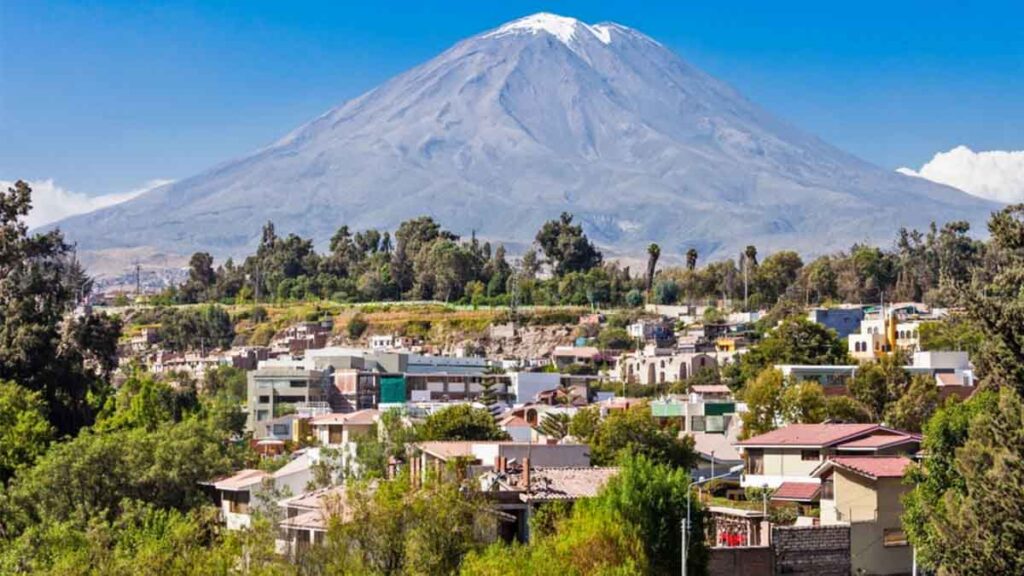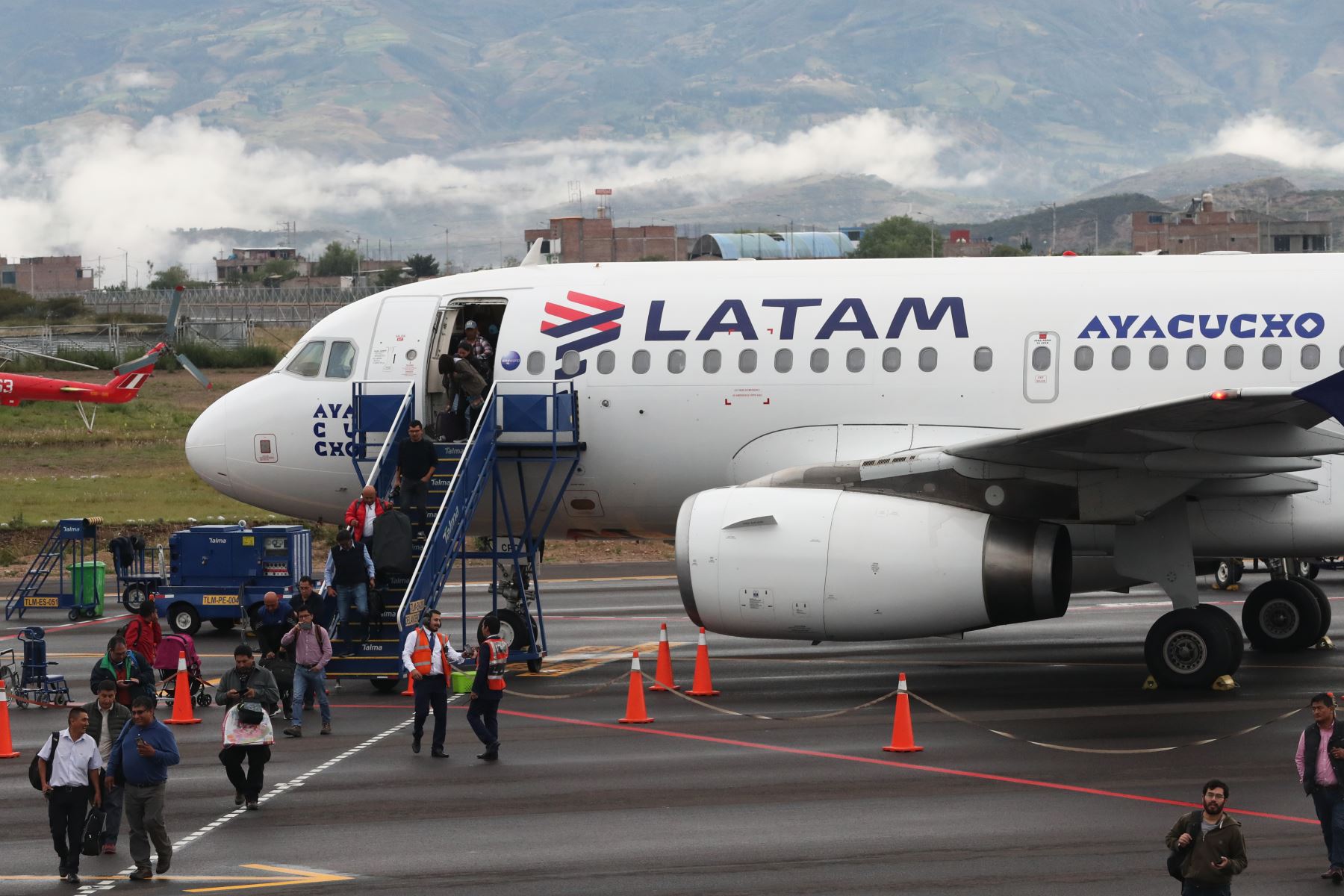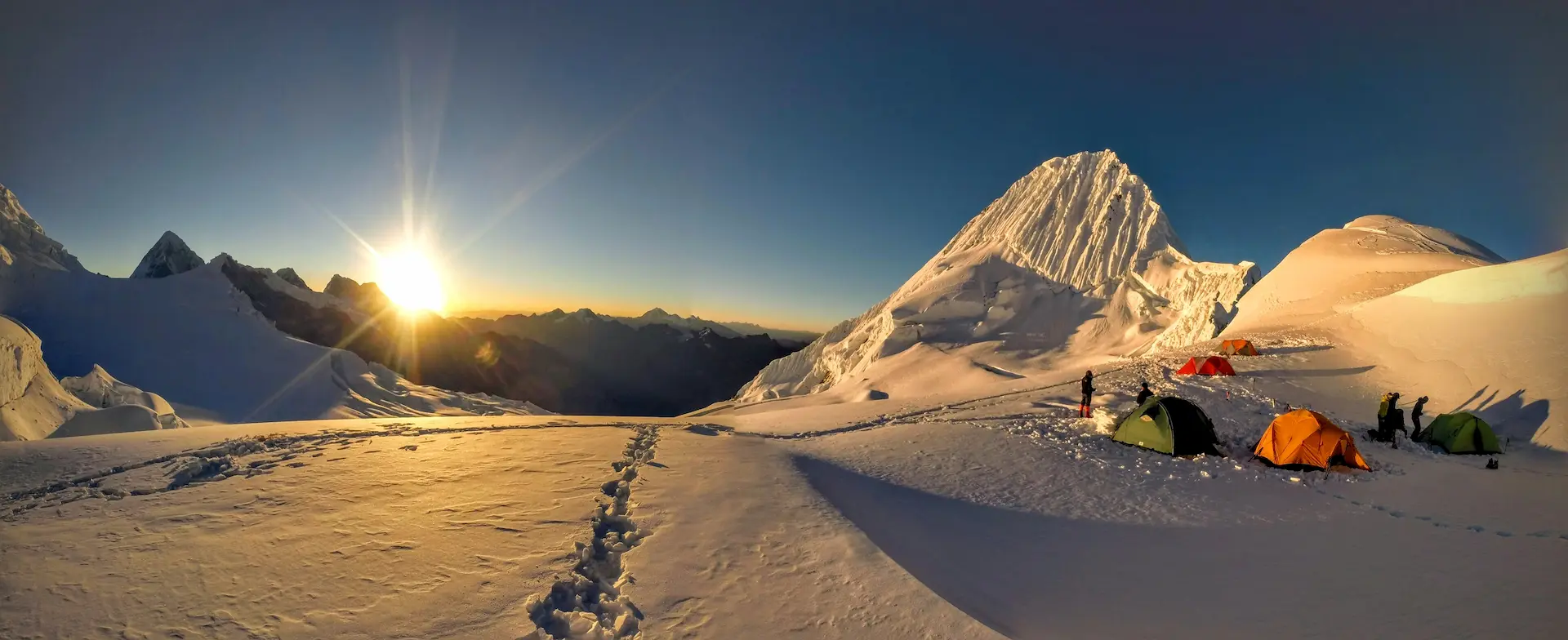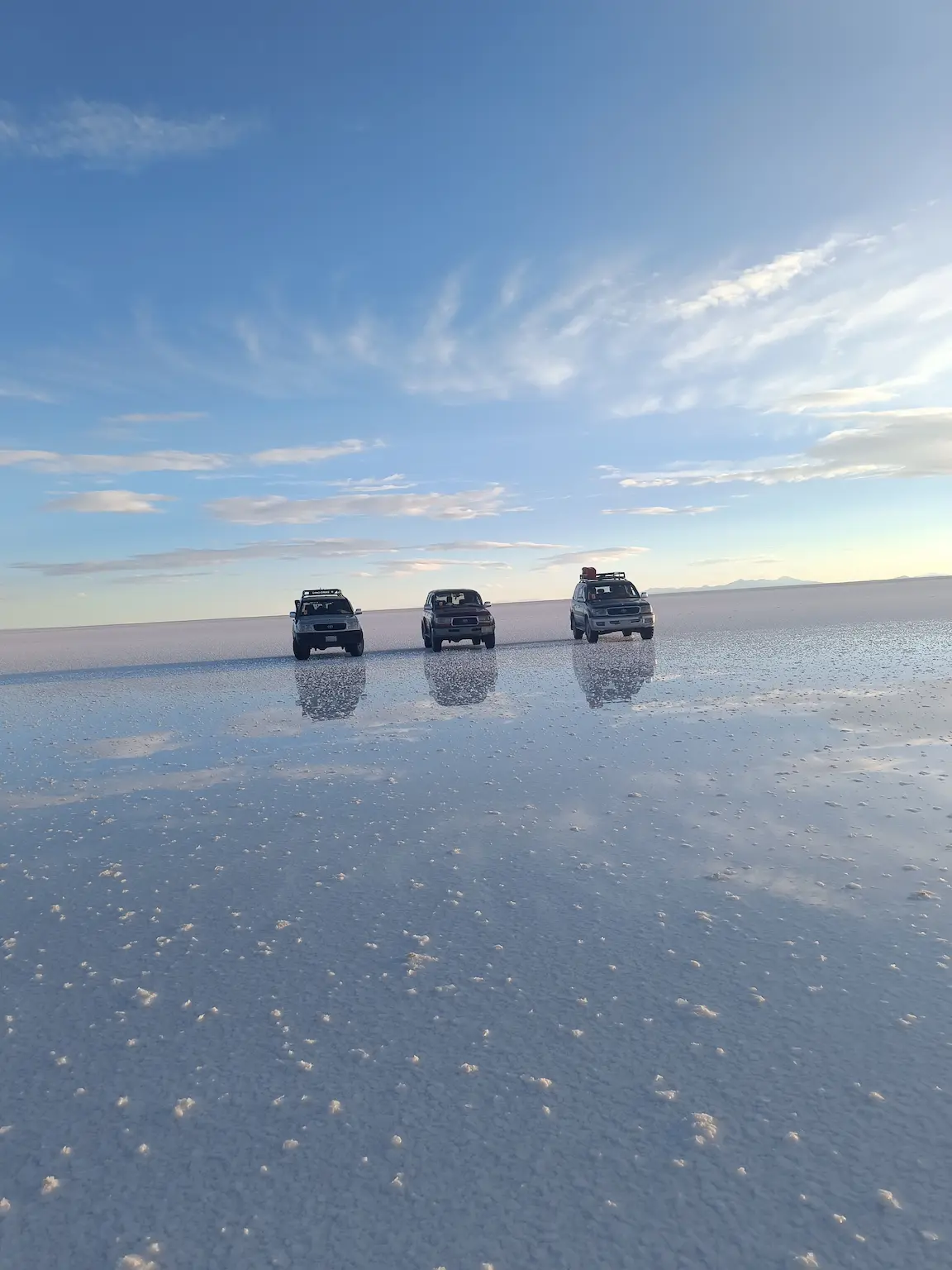
When a person arrives for the first time in the city of Arequipa, their sight and admiration is captivated by the Chachani, Misti and Pichu Pichu volcanoes, huge massifs that rise in the north, northeast and east sectors of the city, sheltering more than 1 million people who have chosen the Chili River Valley as the ideal place to settle and form their families.
Of these volcanoes, one of them undoubtedly attracts the most attention: the Misti. Whether due to its symmetrical conical shape or its imposing and challenging elevation, El Misti is, without question, the best-known volcano in Peru.
The Misti volcano (242900N, 8196400S, 5820 masl) is located on the western edge of the Western Cordillera of the Andes, bordering to the southeast with the extinct Pichu Pichu stratovolcano, to the northwest with the Chachani volcanic complex, to the east with the puna plateau and to the west with the tectonic basin of Arequipa, where the city of the same name is located.
The crater of the Misti volcano is 18 km from the center of the city of Arequipa and the difference in altitude between the city and the top of the volcano is around 3.5 km.
A young volcano with important historical eruptive activity
El Misti is approximately 112,000 years old. It is a stratovolcano formed by the successive accumulation of lava flows and pyroclastic sequences. In the last 50,000 years, the Misti has registered at least 12 volcanic eruptions, whose expelled products have been deposited in large part in the area now occupied by the city of Arequipa.
One of these eruptions, which occurred 2000 years ago, has been classified as one of the most important in southern Peru. This eruption reached a Volcanic Explosivity Index of 5, on a scale that goes from 0 to 8. The products emitted in this eruption were deposited mainly in the southwestern sector of the volcano, where the city of Arequipa is located today. This great eruption also produced pyroclastic flows that flowed through ravines in the northeastern, southwestern, and western sectors of the Misti.
The last eruptive process of the Misti volcano was recorded in the fifteenth century, at the time of the Inca Pachacutec. This eruption, according to historical chronicles and the study of ash deposits and other volcanic products, would have been characterized by moderate explosive activity, accompanied by the emission of volcanic ash.
A volcano of high risk for the population
According to the last population census carried out by the National Institute of Statistics and Informatics (INEI) in 2017, more than 1,080,635 people live in the province of Arequipa. Only in the districts that directly border the Misti volcano, such as Alto Selva Alegre, Miraflores, Mariano Melgar, Paucarpata, Chiguata, today more than 340,000 people live according to INEI data.
It is precisely this proximity of the population and the presence of energy, hydraulic and transportation infrastructure that make the Misti be considered a high-risk volcano. “Because Misti is an active volcano, it has a long eruptive life ahead of it. A future eruption could generate significant impacts in the city of Arequipa”, says Dr. Marco Rivera, scientific researcher at the Geophysical Institute of Peru (IGP).
A volcano of constant seismic and fumarol activity
Daily, in the Misti volcano, between 40 and 60 earthquakes occur that are imperceptible to the population of Arequipa. The IGP, through the National Volcanological Center (CENVUL), has been monitoring the Misti permanently and in real time since 2005 through a geophysical network made up of 6 seismometers, 1 GPS station and 2 scientific cameras.
“Today we know what the base level of the Misti’s activity is, which will allow us to identify possible anomalies or changes in its dynamic behavior in order to warn of a future reactivation,” says Eng. José Del Carpio, CENVUL coordinator.
In addition to seismicity, one aspect that also shows that Misti is an active volcano is the sporadic emission of fumaroles from the crater. Many people from Arequipa observe these emissions that sometimes exceed the top of the volcano and are visible from the city of Arequipa. “The fumarolic emissions of Misti are mostly water vapor produced by the evaporation of meteoric water that is close to the crater and is heated by the influence of the volcanic system,” explains Dr. Rivera.
The Misti Volcano, eternal viewpoint of Arequipa
Majesty and elegance. The almost perfect cone of the Misti volcano rises above the city of Arequipa like a perpetual, stately and vigilant presence, which has been there since before the city was founded, and now awaits visitors who venture to explore its slopes.
The Misti volcano is the most striking element of the Arequipa landscape. The volcano is the most distinctive of the three snow-capped mountains that surround the city, along with Chachani and Pichu Pichu; As the Arequipeños themselves say, it is not in vain that one is born at the foot of a volcano, and it is said that the presence of the Misti greatly influences the brave spirit of its inhabitants.
El Misti rises 5,820 meters above sea level, and although it has not had a major eruption in years, it is considered active or potentially active. Although its geological history records important eruptions in the past, its last important activity was in 1870, when it registered some fumaroles.
It is precisely from the Misti that Arequipa has obtained one of its most distinctive elements, the ashlar. This white volcanic stone was used to build the first houses since the founding of the city, and can be seen in the oldest and most elegant buildings in Arequipa.
Part of the attraction of the Misti volcano is also in the history of the peoples who lived nearby in ancient times. The volcano has always been part of their activities, and even a few years ago evidence of ritual sacrifices performed by Inca peoples was found near the volcano’s crater.
Currently, the ascent to the Misti volcano is done partially or totally (up to the crater), and it is one of the biggest tourist attractions in the city of Arequipa. Various agencies offer tourist tours to those interested, but it should be noted that the complete tour is very demanding. If you overcome this obstacle, you can enjoy not only the wonders of the volcano, but also the surrounding countryside of Arequipa.
In addition, the elegant shape and the perpetual snow of the Misti offer one of the best views of Arequipa from the viewpoints of the city.
How to get to Misti Volcano?
Tours to the Misti volcano generally depart from the Plaza de Armas in Arequipa, although some may go directly through your hotel. They generally last two days, depending on the type of route taken and the height of the ascent.
What should I consider?
Tours to the Misti volcano, in general, are open to all adult audiences, but certain precautions must be taken. As you will be ascending at high altitude, people with heart problems or altitude sickness are not allowed to ascend, and there are also certain age and minimum weight restrictions. It is recommended to also consult the type of guide that the tour will have and the luggage that must be carried.
Best Tours in Peru
Many are the routes that take you to Machu Picchu, but none is like the Inca Trail tours, the most famous pedestrian path in the Americas. After flying from the capital of Peru, Lima, you will arrive in Cusco to walk for four days along a path through forests and dense fog, millenary stone steps and discovering the ruins of ancient fortifications and Inca cities, and all the time enjoying majestic views.
- Sacred Valley Bike Tour
- Honeymoon in Machu Picchu
- 1 Day Inca Trail Hike to Machu Picchu
- Sacred Valley Tours
- Lares Trek to Machu Picchu 4 Days
- Huchuy Qosqo Trek to Machu Picchu
- Short 2 Day Inca Trail Hike to Machu Picchu
- 2 Day Inca Trail with Camping
- Apu Ausangate Trek 7 days
- 4 Day Jungle Trek to Machu Picchu
- Inca Quarry Trail to Machu Picchu
- Urubamba River Rafting
- 5 Days Salkantay Mountain Trek
- 3 Days Salkantay Trek to Machu Picchu
- Huchuy Qosqo Trek to Machu Picchu
- 7 Lakes Ausangate Trek
If you want to visit Machu Picchu, we recommend you to book your Machu Picchu ticket in advance, so you will enjoy your vacation in Machu Picchu without any problem.











